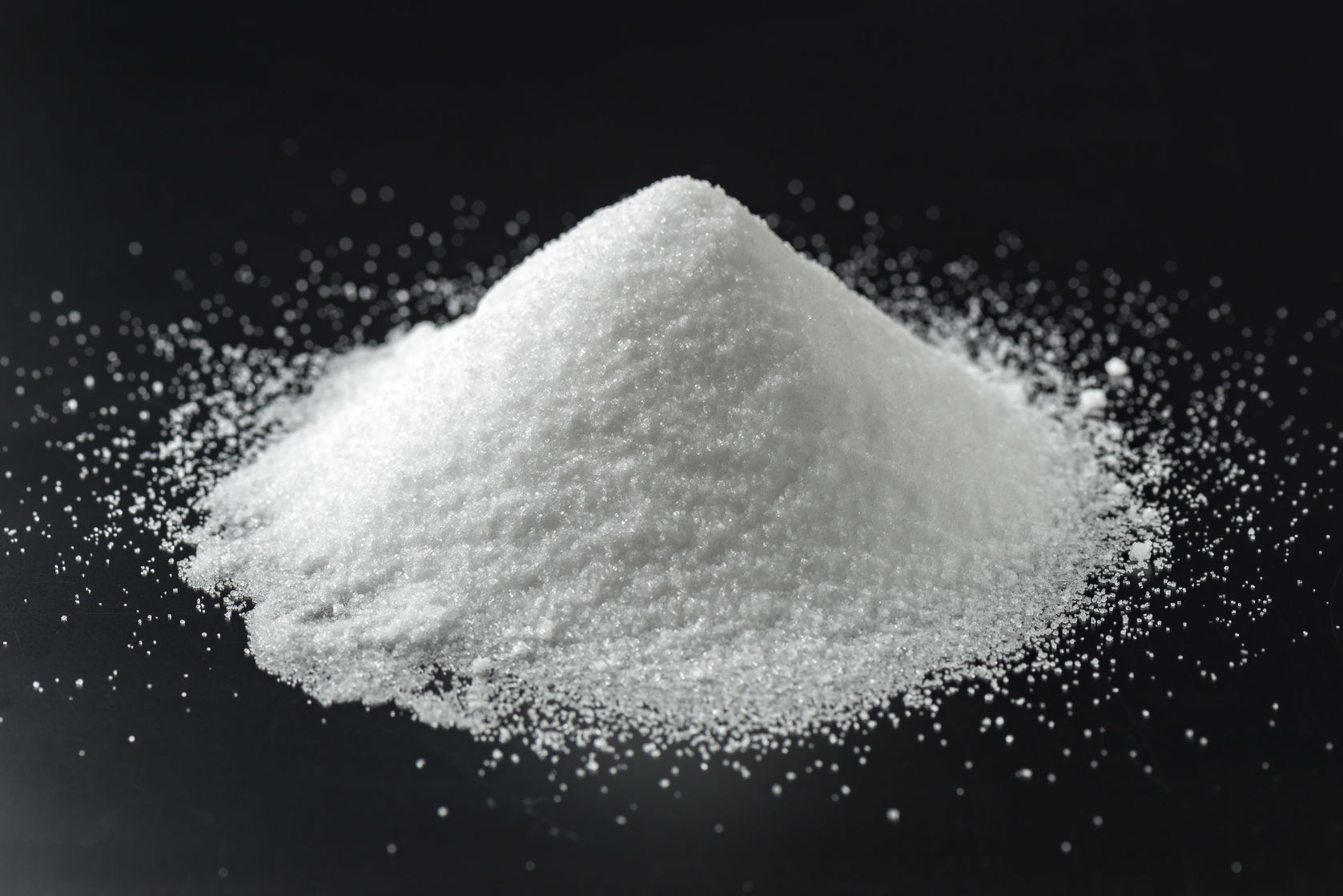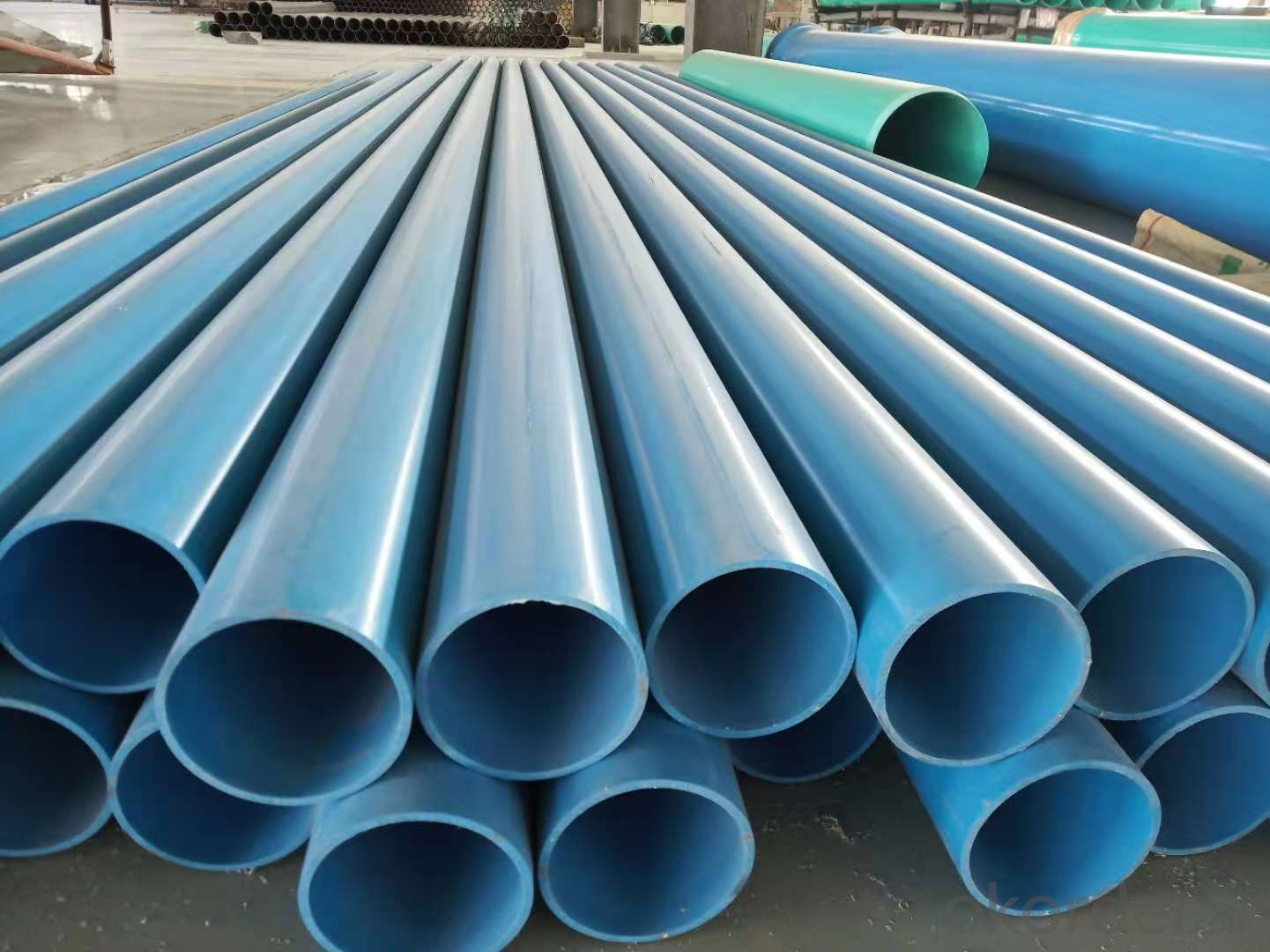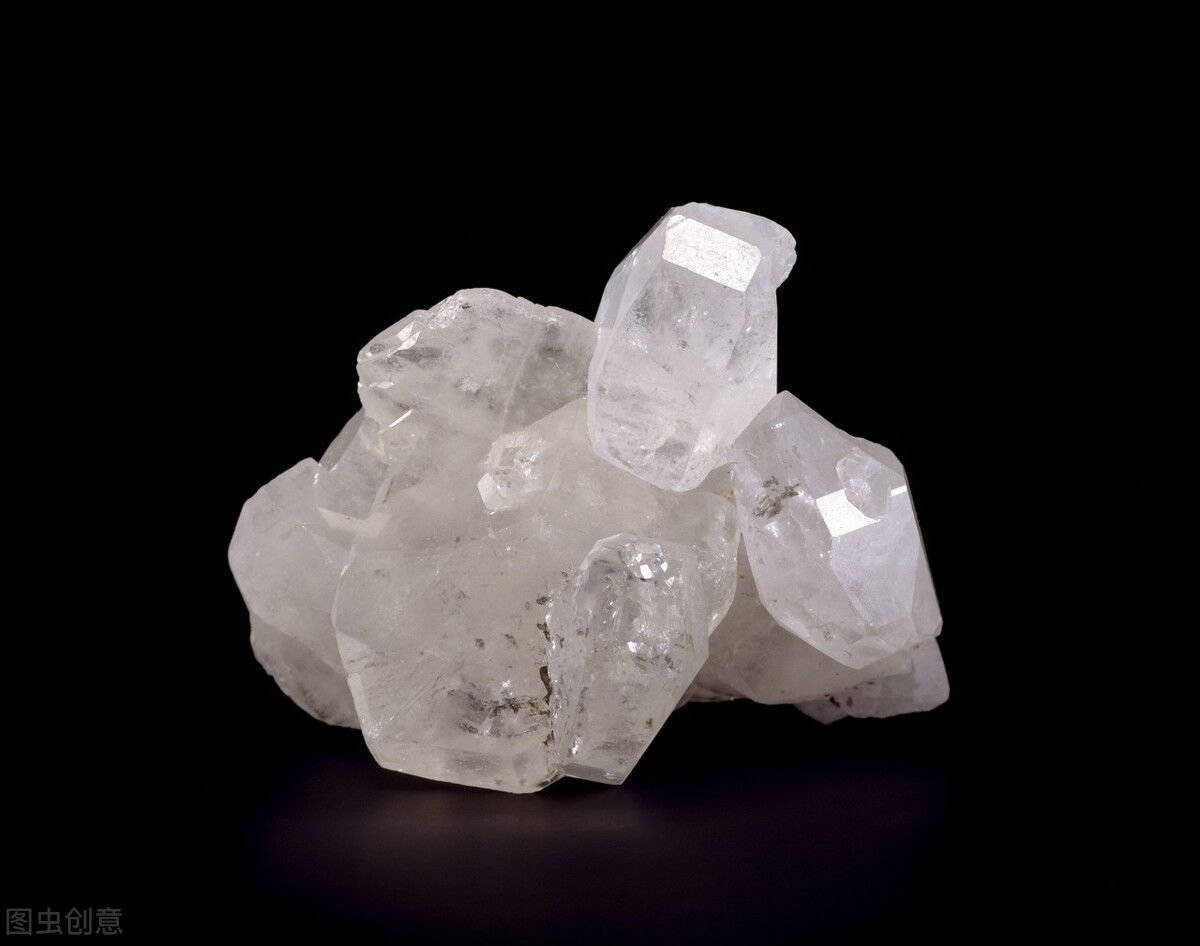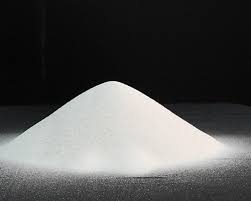What effect do impurity elements have on the quality of high-purity quartz products?
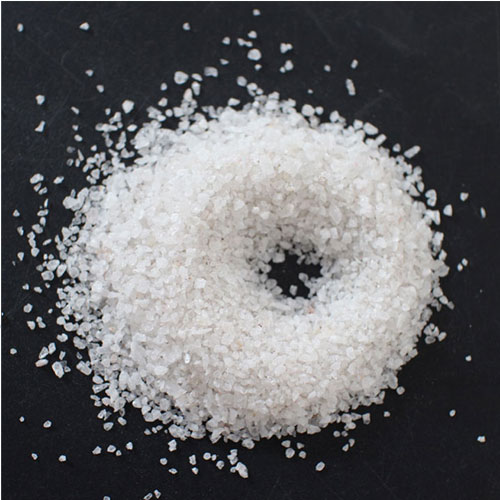
The main impurity elements in quartz are Al, Fe, Ca, Mg, Li, Na, K, Ti, B, H. The impurity elements have a great influence on the quality of high-purity quartz products, such as alkali metals, transition metals, Al and P, etc. Element content is a key indicator of high-purity quartz raw materials. The content requirements of impurity elements vary according to the use of the prepared quartz glass, but the general trend is that the lower the better.
(1) Alkali metal elements Li, K, Na
Reduce the service temperature and mechanical strength of quartz glass, and catalyze the crystallization of quartz glass at high temperature, resulting in devitrification and high temperature deformation of quartz glass. Reducing the content of alkali metal elements is beneficial to increase the softening point of the high-purity quartz crucible, enhance the deformation resistance of the quartz crucible, and improve the yield of single crystals.
IOTA standard sand requires the sum of alkali metal elements to be 2.4×10-6, and the high-purity quartz required for process tubes, silicon wafer processing, quartz blocks, and semiconductor crucibles for single crystal silicon requires the sum of <1.4×10-6, CZ Type crucible requires its sum <0.5 × 10-6, and ultra-high-purity quartz sand for 12-inch or larger silicon wafers requires its sum <0.08 × 10-6.
(2) Transition metal elements Cr, Cu, Fe
The quartz glass produces color spots or causes high temperature discoloration of the quartz glass, which affects the light transmittance and reduces the reliability and stability of the instrument. In the application of optical fibers, it will cause microscopic unevenness, increase fiber loss, and even lead to signal distortion. In semiconductor applications, minute amounts of transition metal elements in the product can promote crystal growth.
(3) Al and P
Entering the quartz lattice will produce strong chemical bonds, which will affect the conductivity of quartz products, and at the same time, enhance the crystallization effect of quartz glass and reduce the service life. A small amount of Al will not affect the quality of high-purity quartz products. IOTA standard sand requires Al element content (12~18)×10-6, but a small amount of Al in the optical fiber will reduce the light transmission of quartz glass. The existence of P element will seriously affect the pulling of single crystal silicon, so the high-purity quartz crucible has high requirements for P, and the content of P element is required to be less than 0.04×10-6.
Silica is expected to occupy an important position in the high-end manufacturing field
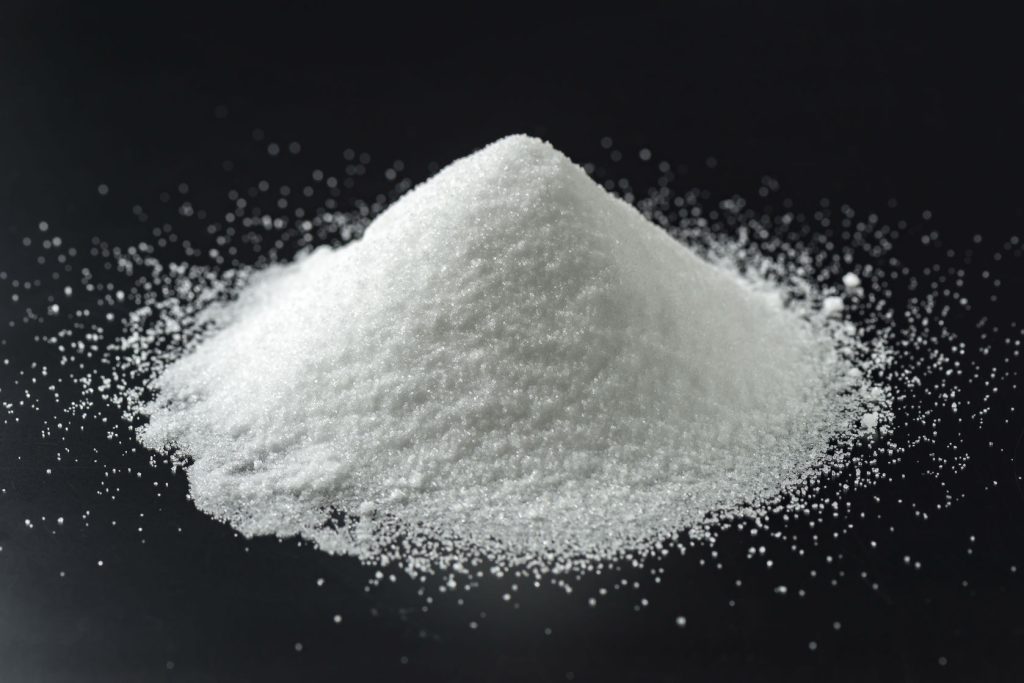
Silica is a general term for fine powder or ultrafine particles of anhydrous and hydrous silica or silicates. It is a white, non-toxic, amorphous fine powder or granular material, mainly referring to precipitated dioxide. Silicon, fumed silica, ultrafine silica gel and aerogel, etc.
Silica is industrial monosodium glutamate, with excellent properties such as chemical inertness and porous structure, which can meet the needs of high-end manufacturing applications, such as battery separators, chemical opening agents, CMP abrasives, coating matting agents, special tire reinforcements, etc. .
Filling materials for battery separators: The global demand is about 70,000-80,000 tons, with a CAGR of 5% during 2022-2026. Data show that China's lead-acid battery production accounts for about 45% of the world's total. According to the calculation that silica used for battery PE separator accounts for about 0.2%, the domestic demand is about 30,000 tons, and the global demand is about 70,000-80,000 tons. At present, the main domestic manufacturers include Yueda New Materials, Tongsheng Chemical and Evonik Jialian. The market concentration is relatively high, and the production capacity of high-end products is almost exclusively dominated by Evonik. In the future, lithium battery separators have the possibility of theoretical application.
Coating matting agent: 200,000 tons globally, about 50,000 tons domestically, CAGR 5% during 2018-2026. According to statistics from Transparency Market Research, the market size of nano-silica products for matting agents in the Asia-Pacific region in 2020 is about 1.67 billion yuan, and the CAGR from 2018 to 2026 is 5.29%, accounting for 44% of the global proportion. According to the average price of 15,000/ton, the global demand is about 200,000 tons. There are not many domestic companies producing silica products for coatings, such as Lingwei Technology and Beijing Aerospace Side, and some high-end products rely on imports.
Chemical opening agent: 200,000 tons globally, 100,000 tons domestically, CAGR 5% in 2020-2024. Demand for silica blocking agents will continue to increase due to their low cost and high performance in high volume applications. Technavio predicts that the market size CAGR from 2020 to 2024 is expected to be 5.72%, of which 44% of the growth will come from the Asia-Pacific region. According to this calculation, the market size of anti-blocking agents in the Asia-Pacific region in 2020 is about 3.6 billion yuan, about 100,000-150,000 tons, and the demand in other regions of the world is also 10-150,000 tons. At present, the high-end market is monopolized by foreign giants.
High-end tire reinforcement: the global demand is 1.2 million tons, and the domestic demand is about 450,000 tons. With the continuous promotion of green tires around the world, as a special material for "green tires", the consumption of silica has increased simultaneously, which has formed a strong support for the growth of global demand for silica. In 2020, the consumption will reach 485,000 tons, accounting for the domestic precipitation method The total consumption of silica accounted for 37%. In the future, under the background of the increasing penetration rate of green tires, the demand for silica used in high-end tires is expected to maintain a growth of more than 10%. Among them, it is worth paying attention to the domestic replacement of aircraft tires and the improvement of tire performance requirements brought by new energy vehicles. .
CMP polishing material: domestic demand is 10,000 tons. According to TECHET statistics, the global CMP polishing liquid market size in 2021 will be US$1.89 billion, a year-on-year increase of 13%. The domestic CMP polishing liquid market size is about 3 billion yuan, of which abrasive particles are the largest cost. In 2021, the total amount of fumed silica consumed by my country's chemical mechanical polishing industry will be about 5,400 tons, a year-on-year increase of 4.90%. According to SAGSI, the demand in this field will reach 6,600 tons in 2026, and the compound growth rate from 2022 to 2026 will be 4.00%.
From the perspective of price level distribution, pharmaceutical carriers, catalysts, chemical opening agents, coating matting agents, and adsorbents are all markets with higher unit prices, and their production costs are not much different from ordinary silica, so they have a relatively high unit price. With high profit margins, there are better development opportunities in these segments of the market.
Production process of active nano calcium carbonate for high performance PVC pipe
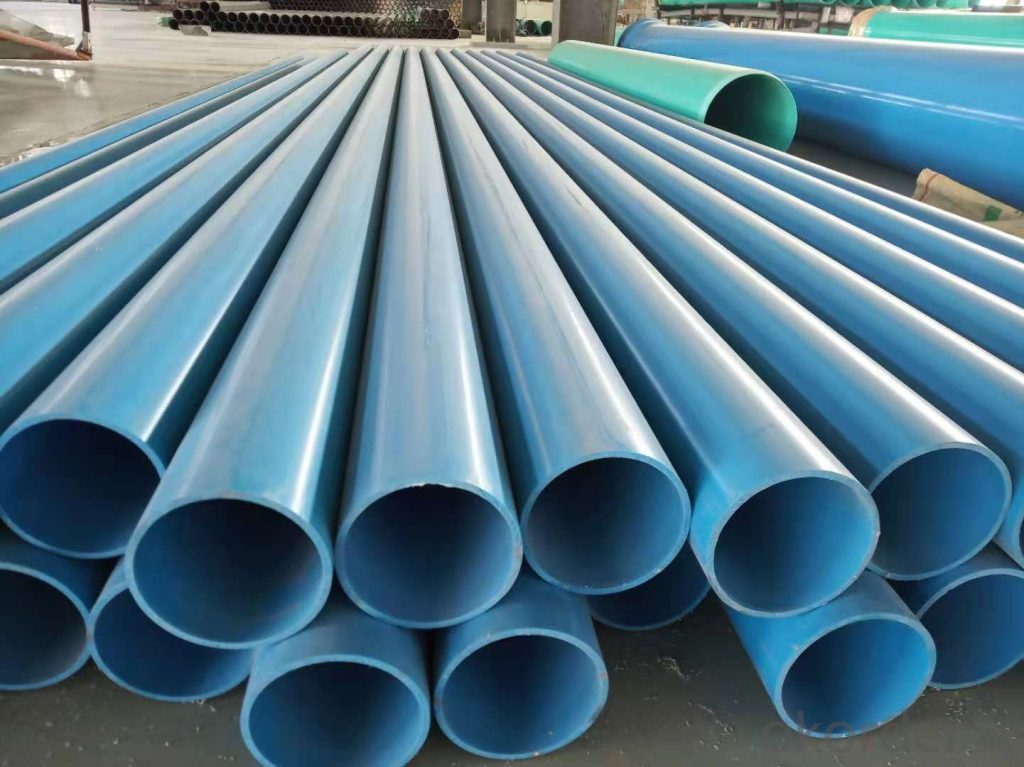
Activated nano-calcium carbonate is used in plastics, rubber and other polymer materials to fill and reinforce, and to improve the mechanical properties of products, increase the amount of fillers under the condition that the performance remains unchanged, reduce the overall cost of products, and improve product quality. market competitiveness. Therefore, nano calcium carbonate is more and more widely used in plastics, rubber, adhesives, inks and other fields, especially in polyvinyl chloride (PVC) products with the largest amount.
In order to meet the needs of producing high-strength, high-elasticity PVC pipes, Xie Zhong et al. used limestone as raw material to generate lime by calcining, and adopted the double-tower continuous carbonization method to produce nano-calcium carbonate. The surface treatment agent composed of coupling agent and other components is used to activate the calcium carbonate, and the nanometer activated calcium carbonate with low oil absorption value, good processing performance and good dispersibility is prepared.
Production process of active nano-calcium
Using limestone as raw material, it is calcined to generate quicklime CaO and CO2. CaO is dissolved in water-produced slaked lime Ca(OH)2. Add crystal form control agent to slaked lime Ca(OH)2 water, and control certain concentration and temperature conditions. After stirring, the kiln exhaust gas (CO2) is introduced, and the reaction generates nano-calcium carbonate (carbonization).
The nanoscale calcium carbonate slurry is heated to a certain temperature, activated (activated) by adding a surface treatment agent, and then the water in the filter cake is removed by a filter press, and then the nanoscale activated calcium carbonate is obtained by air drying, classification and sieving.
Carbonization process: Double-tower continuous carbonization method is adopted, the first jet tower, the second bubble tower, the effective volume of each tower is 30m3. Add Ca(OH)2 slurry (specific gravity: 1.05), the temperature of the slurry is 15~25℃, add 0.2%~0.8% crystal control agent (calculated on the basis of Ca(OH)2 dry basis), pass CO2, control CO2 The concentration is 30%, the carbonization reaction time is 130min, the end point temperature of the carbonization reaction is ≤55℃, the pH value is 8.0, and the air permeability specific surface area is ≥9.5m2/g. If the dry concentration of Ca(OH)2 is too high, the viscosity of the slurry will increase, the coating phenomenon will be serious, and the calcium carbonate particles are easy to agglomerate into large particles, and the calcium carbonate particles are mixed with Ca(OH)2, control the Ca(OH)2 The mass base concentration of 5% to 10% is appropriate.
Activator: Commonly used activators (surface treatment agents) mainly include inorganic treatment agents, fatty acids and their derivatives, resin acids, coupling agents, polymer compounds and vegetable oils. Activated calcium carbonate products for different uses are mainly different from the use of different surface treatment agents. After the selection of active agent varieties and the optimization of the ratio, four kinds of substances including fatty acid, vegetable oil, non-ionic surfactant and coupling agent were finally selected, and the ratio was 3:2:1:0.5.
Activation process: 3-step surface treatment method is adopted, 3 different activators are activated in 3 times, the CaCO3 slurry (3.0t based on CaCO3 dry basis) is pumped into the 30m3 activation tank, the mixer is started, the speed is 280r/min, and then Add activator for activation, add the saponified fatty acid solution, stir for 1h, and complete the first step of activation. Then, the emulsified vegetable oil and monoglyceride solution were added and stirred for 1 h to complete the second step of activation. Then add the emulsified coupling agent solution and stir for 1 h to complete the third step of activation.
The active nano calcium carbonate produced by this process has low oil absorption value, good processing performance and good dispersibility. It is used as a filling and reinforcing agent in the production of PVC drainage pipes. , Longitudinal retraction rate, flat test and other indicators are better than the national standard for PVC pipes. A 30-ton truck is pressed over the drain pipe, and the water pipe is still restored to its original shape, and the product performance is excellent.
Influence of alkali treatment on acid leaching and purification of vein quartz
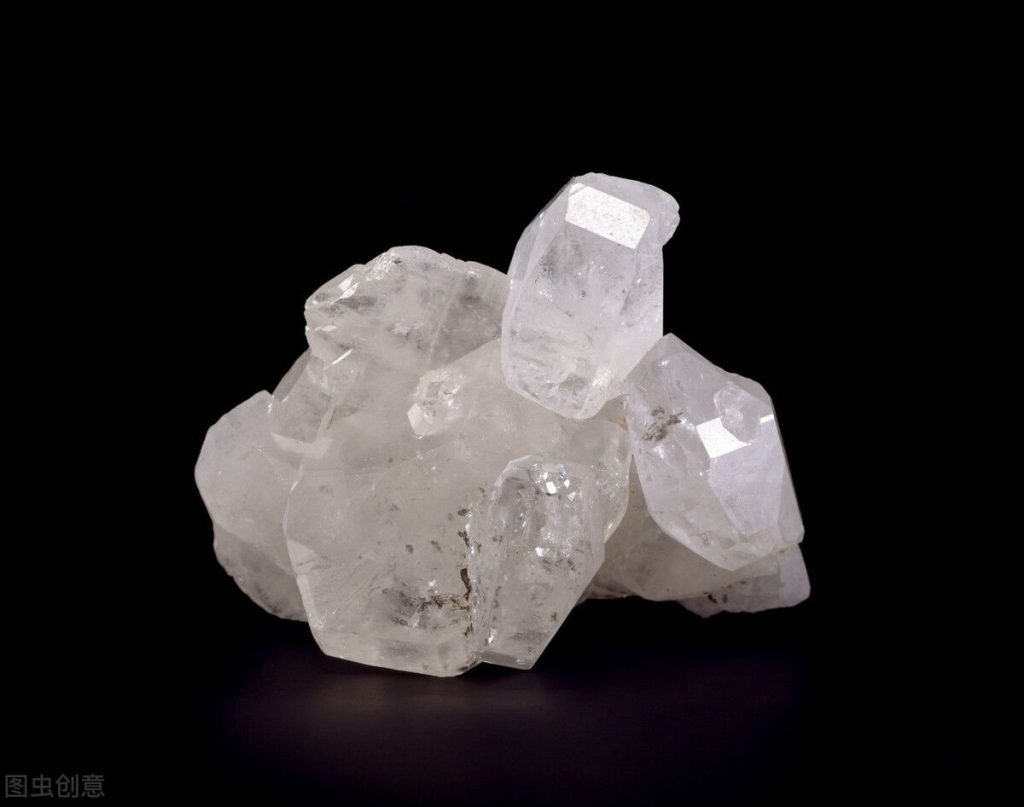
Vein quartz is one of the important raw materials for purifying and processing high-purity quartz sand, Vein quartz ore contains many associated gangue minerals, such as feldspar, mica, rutile, tourmaline, chlorite, etc., and many inclusion impurities are also formed. For low-grade vein quartz ore, simple acid leaching generally cannot meet the requirements of high-purity quartz, and some quartz particles still contain inclusions.
The roasting-water quenching method can create gaps between quartz and gangue minerals, exposing a large number of inclusions, thereby increasing the chance of contact between reagents and gangue minerals in quartz, and is more conducive to the removal of gangue minerals.
Using the purification process of roasting-water quenching-magnetic separation-flotation-alkaline treatment-acid leaching, the vein quartz samples were subjected to alkali treatment-acid leaching test, and the influence of alkali treatment conditions on the quality of acid leaching concentrate was systematically studied. :
(1) Through the conditional experiment of alkali treatment and acid leaching of vein quartz flotation concentrate samples, it is found that alkali treatment is beneficial to the reduction of Al content in acid leaching concentrate, and the effects of three different alkali treatments are KOH>NH4OH, respectively. >NaOH, among them, the Al content of the acid leaching concentrate treated with KOH alkali solution is the lowest at 253.67μg/g.
(2) Treated with KOH alkali solution, the optimum reaction temperature is 40℃, the optimum concentration is 0.5mol/L, and the optimum reaction time is 4h. Under the optimum conditions, the Al content in the vein quartz flotation concentrate after alkali treatment and acid leaching treatment was 245.49μg/g. However, too high temperature, too long time, and too large alkali concentration are not conducive to the reduction of Al content in the acid leaching concentrate by alkali treatment, and will cause excessive dissolution of quartz, resulting in a relative increase in Al content.
(3) Through scanning electron microscope analysis, the surface of the alkali-treated quartz is very rough, and there are many tiny pores on the cleavage surface, and a large number of cavities are also dissolved on the fracture surface. During the alkaline treatment, the port face of the quartz is more easily corroded by the alkaline solution than the cleavage face. The test analysis shows that the alkali treatment enhances the effect of acid leaching by eroding the quartz surface and reacting with the surface SiO2 to expose the internal gangue minerals.
Non-metallic mineral beneficiation and purification method and main process equipment
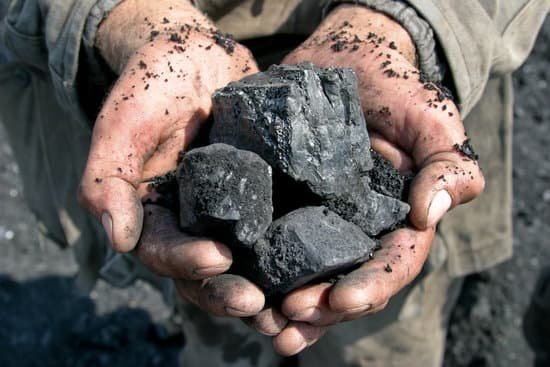
Naturally produced non-metallic ores contain other mineral impurities or co-associated minerals to varying degrees. For specific non-metallic mineral products, some of these mineral impurities are allowed to exist, such as a small amount of dolomite and wollastonite contained in calcite, and part of pyrophyllite and chlorite contained in talc; Various iron minerals and other metal impurities contained in minerals such as kaolin, quartz, diatomaceous earth, talc, stone mother, wollastonite, and calcite that may be removed. There are also some minerals, such as graphite, diatom, sandy kaolin, coal-based kaolin, etc., the raw material minerals have low grades, and must be purified or calcined to meet the application requirements.
For non-metallic minerals, purity in many cases refers to their mineral composition rather than their chemical composition. There are many non-metallic minerals whose chemical composition is basically similar, but the mineral composition and structure are far from each other, so their functions or application properties are also different. This is the biggest difference between non-metallic ores and metallic minerals, such as quartz and diatoms. Although the chemical components of soil are all silica, the former is a crystalline structure (silicon-oxygen tetrahedron), while the latter is a non-quality porous structure with a complex structure. Therefore, their application properties or functions are also different. In addition, in the process of beneficiation of non-metallic minerals, the crystal structure of useful minerals should be maintained as much as possible, so as not to affect its industrial use and use value.
At present, the commonly used beneficiation methods for non-metallic minerals include: sorting, washing, gravity separation, flotation, magnetic separation, electrical separation, chemical beneficiation, selective flocculation, calcination and shape sorting.
Is a good quartz mine equal to a good quartz sand?
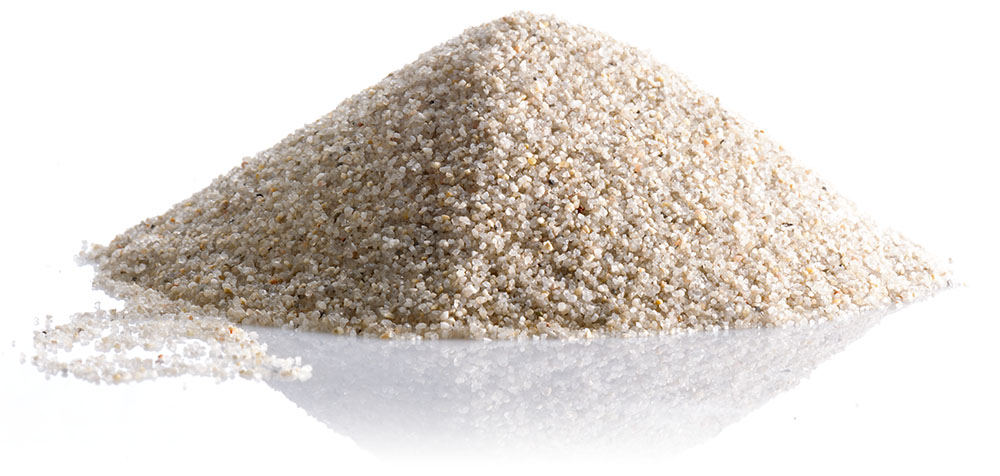
Quartz sand is mainly used in two segments in the photovoltaic industry: photovoltaic glass and crucible. Among them, photovoltaic glass has low requirements on the purity of quartz sand, SiO2 ≥ 98.55%, and high light transmittance of glass is mainly required.
But the quartz sand used in the crucible is much stricter. The quartz crucible is basically translucent and is divided into three layers: the outer layer (opaque layer) and the middle inner layer (vacuum transparent layer). The inner layer affects the success rate of single crystal growth and the quality of the crystal rod, so the quality of the inner layer sand is relatively high, and imported ones are generally used, such as Unimin from the United States and TQC from Norway. The outer layer contains a large number of air bubbles, which is heated evenly and has a good thermal insulation effect. Domestic enterprises mainly make sand for the inner and outer layers of the crucible.
Quartz mines are widely distributed around the world, and industrial quartz mines include natural crystal, quartz sandstone, vein quartz, powder quartz, natural quartz sand and granite. However, the application fields of different types of sand are different. For example, some are suitable for the production of quartz tubes and quartz rods, so not all these minerals can be used to produce quartz crucibles.
In fact, there are very few deposits that are really suitable for producing quartz crucibles, mainly concentrated in the United States, Norway and India. At present, there are only three companies in the world that can mass-produce high-purity quartz sand, namely Unimin in the United States, TQC in Norway and domestic quartz shares.
Quartz sand is a natural resource, and the scarcity of ore is the key to restricting the supply of high-purity quartz sand. Unimin and TOC use mines in the United States, but since quartz mines are associated mines, it is difficult to accurately measure the output. In addition, companies such as Unimin are highly integrated, and quartz is only a part of it, and because it is an associated mine, to increase the output of quartz, it is necessary to increase other products accordingly. Therefore, the relative expansion is limited. In addition, in addition to producing photovoltaic sand, Unimin also produces semiconducting sand, and semiconducting sand is more expensive, so there is insufficient power to transfer production capacity.
Except for the mines in the United States, which are Indian mines, because very few domestic quartz sand mines can be used as crucibles, domestic companies mainly buy mines from India, and most of the quartz shares use Indian mines. The sand from the Indian mine has few bubbles after being made into a product, is easy to purify, and has a moderate cost, which is suitable for crucible sand.
Therefore, it is not the purification technology that really restricts the production capacity of high-purity quartz sand, because the domestic purification technology is not weaker than that of foreign countries, and the core is the resource of the ore. It can be said that "whoever has good ore will have good sand".
Barite beneficiation and purification technology and research progress
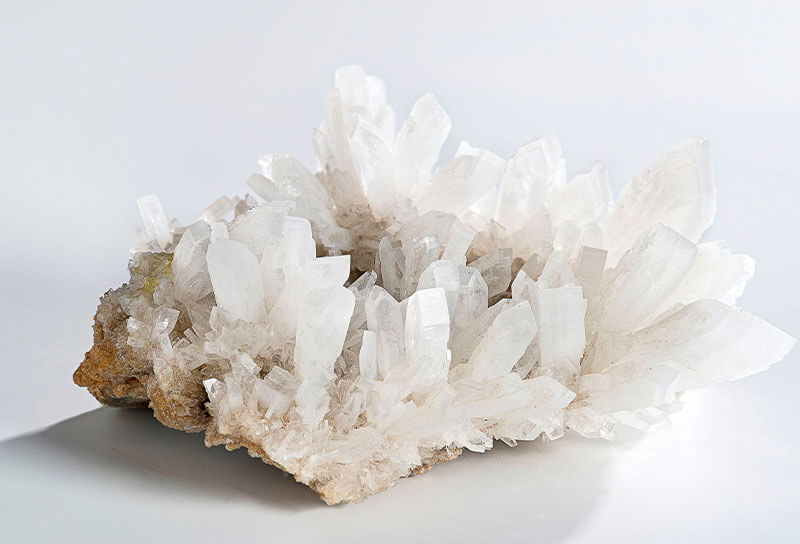
Barite is often associated with minerals such as quartz, calcite, dolomite, fluorite, siderite, rhodochrosite, pyrite, galena and sphalerite. In deposits such as , silver and rare earth, barite is often a common gangue mineral. Therefore, the sorting process of barite is restricted by factors such as deposit type, mineral composition, and characteristics of barite and gangue phases.
At present, barite beneficiation and purification technologies mainly include hand separation, gravity separation, magnetic separation, flotation and combined processes.
1. Hand selection
The manual selection process is to manually select high-grade lump ore based on intuitive physical indicators such as the color and shape of the ore. It is suitable for selecting ores with high grade, simple composition and stable quality. Many small private mines in my country often use this method for sorting. For example, Pancun Mine, Xiangzhou, Guangxi, selects high-grade barite ore by hand selection process. The concentrate particle size is 30-150mm, and the barite grade can be as high as 95%. The process is simple and easy to implement, requires low mechanization of equipment, but has high labor intensity, low production efficiency, and serious waste of resources.
2. Re-election
Different minerals with large differences in density can be separated by gravity separation. The density of barite is 4.5g/cm3, which is much higher than other common gangue minerals (such as quartz 2.65g/cm3, calcite 2.6g/cm3). Therefore, the gravity separation process can be used to separate barite and gangue minerals. Select different gravity separation equipment according to the size of the ore grade. The coarse grade (-5+0.45mm) ore can use the jigging method, and the fine grade (-0.45mm) ore can use the shaking table or the spiral chute method.
This process has the advantages of simple equipment, good stability, no beneficiation agent, low cost, and less environmental pollution. Therefore, it is difficult to efficiently recover barite resources by a single gravity separation process, and it is necessary to further recover barite by combining magnetic separation or flotation processes.
3. Magnetic separation
When there is a significant difference in the magnetic properties of the minerals, the magnetic separation process can be used for separation. Barite is a non-magnetic mineral. When magnetic minerals (such as iron oxides) are the main gangue minerals, a magnetic separation process can be used to separate barite and gangue minerals. The resulting concentrate has a high BaSO4 content, which can be used as a requirement. Barite raw material for barium-based pharmaceuticals with very low iron content. Magnetic separation is often used to select pyrrhotite, magnetite, limonite and hematite.
4. Flotation
Flotation is an important way to deal with refractory barite resources such as low-grade ores, associated ores and tailings, and this process has good adaptability to various types of barite ores with complex inlays, and is also capable of recovering fine-grained weight. Effective way of spar. The flotation process generally includes positive flotation and reverse flotation.
5. Combined process
For associated ores, flotation tailings, and refractory ores with fine-grained mineral inlays, the recovery of barite by a single gravity or magnetic separation process is not satisfactory, and a combined process is required to efficiently recover barite. Common combined processes are: flotation-reelection, gravity-magnetic separation, magnetic separation-flotation and magnetic separation-re-election-flotation.
What kind of ore can produce high-purity quartz?
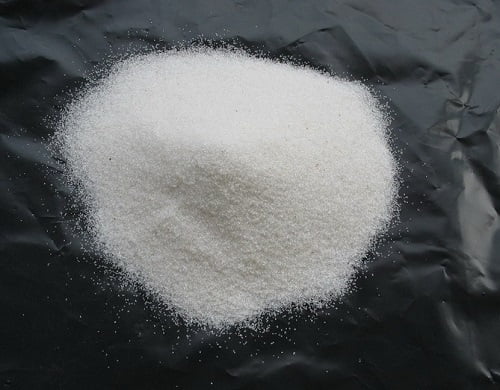
High-purity quartz is a high-quality quartz produced in nature (such as crystal) or processed from relatively pure quartz raw materials. It is necessary for the production of high-tech industries such as semiconductors, high-temperature lamps, communications, precision optics, microelectronics, and solar energy. raw materials.
Naturally formed high-purity quartz is scarce or extremely limited (such as crystal). In order to obtain high-purity quartz, the natural high-purity quartz raw material is often purified into high-purity quartz. Therefore, the evaluation of high-purity quartz raw materials, as well as the research on the occurrence and formation mechanism of high-purity quartz raw materials, will be beneficial to the sustainable supply of high-purity quartz raw materials and the processing and purification of high-purity quartz.
1. Comprehensive evaluation of high-purity quartz raw materials
Judging the quality of quartz by chemical composition alone is one-sided, and various factors should be considered comprehensively in evaluating quartz. As far as the quartz mineral itself is concerned, five factors should be considered: the chemical composition of quartz, the embedded particle size, the symbiotic gangue minerals, inclusions and lattice impurities.
2. Ideal source rock for high-purity quartz raw materials
Quartz may be contained in magmatic rocks, sedimentary rocks, metamorphic rocks and hydrothermal veins. The quantity and quality of quartz in rocks of different geological origins vary widely, the purification techniques and difficulties vary widely, and the industrial uses are also quite different.
(1) Magmatic rock
(2) Metamorphic rocks
(3) Sedimentary rocks
3. Geological origin of high-purity quartz raw materials
Generally, the composition of trace elements in quartz is related to the properties of the melt/fluid during quartz crystallization and the later transformations (such as tectonic deformation, metamorphism, hydrothermal metasomatism, etc.) after crystallization. Therefore, relatively pure quartz can be directly crystallized in a melt/fluid with few impurities in a suitable external environment; if the purity and particle size of the quartz formed by the melt/fluid are not good at the beginning, it can also be transformed later (such as structural deformation). , metamorphism, hydrothermal metasomatism, etc.), the impurities can be "purified" by removing impurities through lattice recovery, particle boundary migration, etc.; of course, it can also be formed in the superposition of the above two methods.
4. The influence of impurities on the purification of high-purity quartz
The theoretical chemical composition of quartz is SiO2, but pure SiO2 quartz does not exist in nature. Quartz more or less contains some impurity elements (such as Al, Ti, K, Na, Ge, etc.), the type and content of which are related to the melting/fluid and external environment when the quartz is crystallized and the transformation received after crystallization.
The impurity content and occurrence state in the quartz crystal are important constraints to determine whether the quartz crystal can become high-purity quartz. When comprehensively evaluating the metallogenic potential of high-purity quartz in combination with technological indicators and commercial value, it is necessary to comprehensively examine the inlaid characteristics of quartz minerals, coexisting gangue minerals and types. The detailed identification of the occurrence state, quantity and distribution characteristics of impurity elements in the quartz crystal is very important for the subsequent mineral purification processing and discussion of its industrial use.
Surface modification method and functional design of fly ash
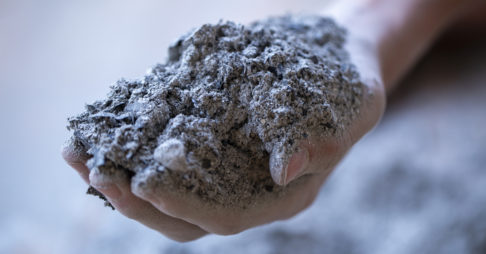
Surface modification and refunctionalization of fly ash particles is one of the main means to improve their high value-added utilization. Surface modification of fly ash particles and loading some functional additives can obtain a new type of functional material . The method can greatly increase the added value of the fly ash, can greatly mobilize the enthusiasm of the enterprise for the deep utilization of the fly ash, and promote the deep resource utilization of the fly ash.
Present Status of Surface Modification Technology of Fly Ash
By modifying pulverized coal, a product with a larger specific surface area can be obtained, which can better exert its adsorption performance. Using physical modification methods, such as mechanical grinding, microwave treatment, ultrasonic wave and high temperature treatment, etc., can destroy the network structure of fly ash glass body, increase the specific surface area, and can also change the electromagnetic properties of fly ash particles by coating. Modification methods, such as fire modification, hydrothermal modification, acid modification, alkali modification, mineral salt modification, calcium oxide treatment, etc., can also destroy the silicate network structure, promote the dissolution of the surface of the glass body, and improve the ratio surface area and ion exchange capacity.
Methods of chemical modification also include modification using surfactants, such as cationic surfactant treatment, coupling agent treatment, and stearic acid treatment.
Cationic surfactants can change the surface electrical properties of fly ash particles and improve their surface adsorption capacity, and are mainly used in various wastewater treatment processes; stearic acid can achieve the purpose of hydrophobic modification, making fly ash in the polymer ( Such as PVC, PP) as a filler; the coupling agent modification treatment method can improve the dispersibility of inorganic pigments and the adhesion of glass and metal surfaces, etc. These methods have good effects in the treatment of fly ash, and have been It shows good results in various applications.
Surface functional design of fly ash particles
There are many methods for functional design and modification of the surface of fly ash particles, generally through the design of groups on the interface, and then loading the corresponding functional groups to obtain fly ash-based functional materials.
(1) Fly ash-based hydrophobic film material
Hydrophobic films have many applications, such as building exterior walls, packaging materials, and mildew-proof places. For example, the surface of coal fly ash is hydrophobically modified with cationically dispersed rosin gum to prepare a hydrophobic fiber material.
The fly ash was modified with stearic acid, and then the relationship between the pigment volume concentration and the critical pigment volume concentration in the organic/inorganic composite material was used to adjust the hydrophobic properties of the film.
In a word, the hydrophobic film material prepared by using fly ash has low cost, can be used in occasions with high requirements for packaging materials and mildew resistance, and has good practicability.
(2) Fly ash-based composite humidity control material
The fly ash-based humidity-conditioning material is a composite humidity-conditioning material that can be obtained by compounding hydrophilic polymers and salts after hydrophilic modification of fly ash, which can be recycled to prepare powder or paint. Applied to different occasions, it has the advantages of passive, intelligent humidity control, low cost, energy saving and environmental protection.
(3) Formaldehyde capture material
The use of modified fly ash to load formaldehyde scavenger is equivalent to combining the two effects of physical adsorption and chemical neutralization. On the one hand, the physically adsorbed formaldehyde reacts with the scavenger, and there is no problem of desorption, which completely eliminates formaldehyde; It is easy to use and can eliminate formaldehyde more completely.
Utilizing the loading of formaldehyde scavenger on the surface of fly ash, an environmental purification material with excellent performance can be obtained, which has a very high added value. While having good economic benefits, it also has very good social benefits.
The surface functional modification of fly ash has very strong pertinence, which can turn solid waste fly ash into a functional material. In short, only reasonable, full and deep utilization of fly ash can truly make fly ash no longer a solid waste, but an industrial raw material with low price and excellent performance.
Nano-zinc oxide - a new functional fine inorganic chemical material
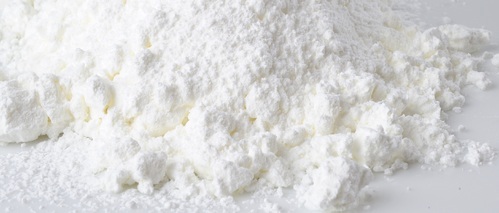
Nano-zinc oxide is a new type of functional fine inorganic chemical material, which has the characteristics of cheap and easy to obtain raw materials, high melting point, good thermal stability, good electromechanical coupling, good luminescence performance, antibacterial performance, catalytic performance and excellent ultraviolet shielding performance. , widely used in antibacterial additives, catalysts, rubber, dyes, inks, coatings, glass, piezoelectric ceramics, optoelectronics and household chemicals and other fields.
Nano-zinc oxide has good dispersibility, loose and porous, good fluidity, easy to disperse during smelting, and small heat generation of the rubber compound. As a vulcanization activator, the compound added to the target product has stronger activity, improving the microstructure of vulcanized rubber and improving the quality of rubber products. Finish, mechanical strength, tear strength, thermal oxidation resistance, and has the advantages of anti-aging, anti-friction and fire, prolonging service life, etc. When the dosage is 30-50% of ordinary zinc oxide, it can make the rubber tire side rubber anti-folding The performance is increased from 100,000 times to 500,000 times, which can effectively reduce the production cost of enterprises.
2. Ceramic crystallizer
Nano-zinc oxide has nano-effect, small particle size, large specific surface area, and has higher chemical activity than ordinary zinc oxide, which can significantly reduce the sintering and densification degree of the material, save energy, and make the composition of ceramic materials dense and uniform. , to improve the performance of ceramic materials. Due to its volume effect and high dispersing ability, it can be used directly without processing and grinding. Compared with ordinary zinc oxide, its dosage can be reduced by 30%-50%. The sintering temperature of ceramic products is 40-60℃ lower than that of ordinary zinc oxide. It can also make ceramic products have antibacterial and self-cleaning functions.
3. Antioxidant of lubricating oil or grease
Nano-zinc oxide has strong chemical activity and can capture free radicals, thereby destroying the free radical chain reaction. At the same time, nano-zinc oxide is an amphoteric oxide, which can neutralize the acid accumulated on the hydrocarbon chain of the lubricating oil over time, which can prolong the service life of the lubricating oil.
4. UV absorber
Nano-zinc oxide can absorb ultraviolet rays and generate electronic transitions, thereby absorbing and blocking medium-wave ultraviolet (UVB) and long-wave ultraviolet (UVA). Due to the small particle size of nano-zinc oxide, the ultraviolet absorption rate per unit addition amount is greatly improved. Nano-zinc oxide is an inorganic metal oxide, which can maintain long-term stability without degradation, thus ensuring long-term stability and effectiveness of its ultraviolet shielding effect. This product is suitable for environments with strong ultraviolet radiation, and can be used in wooden furniture protective coatings, resins, plastics and rubbers, as well as cosmetics and other products.
5. Anti-mold and bacteriostatic agent
Nano-zinc oxide is a self-activating semiconductor material. Under the irradiation of ultraviolet light and visible light, it will decompose freely moving electrons and leave positive electron holes at the same time. Holes can react with oxygen and water on the surface of zinc oxide to generate hydroxyl radicals, reactive oxygen species, etc., thus causing a series of biological reactions. It can effectively oxidize and degrade biomass, so as to play the role of anti-mildew and antibacterial. Due to the nano-effect of nano-zinc oxide, its specific surface area is significantly increased, its photocatalytic oxidation activity is higher, and it has more efficient antibacterial, antibacterial, and antifungal properties. . It can be applied to antibacterial and anti-mildew of coatings, sealants, plastics, rubber, and textile products.

